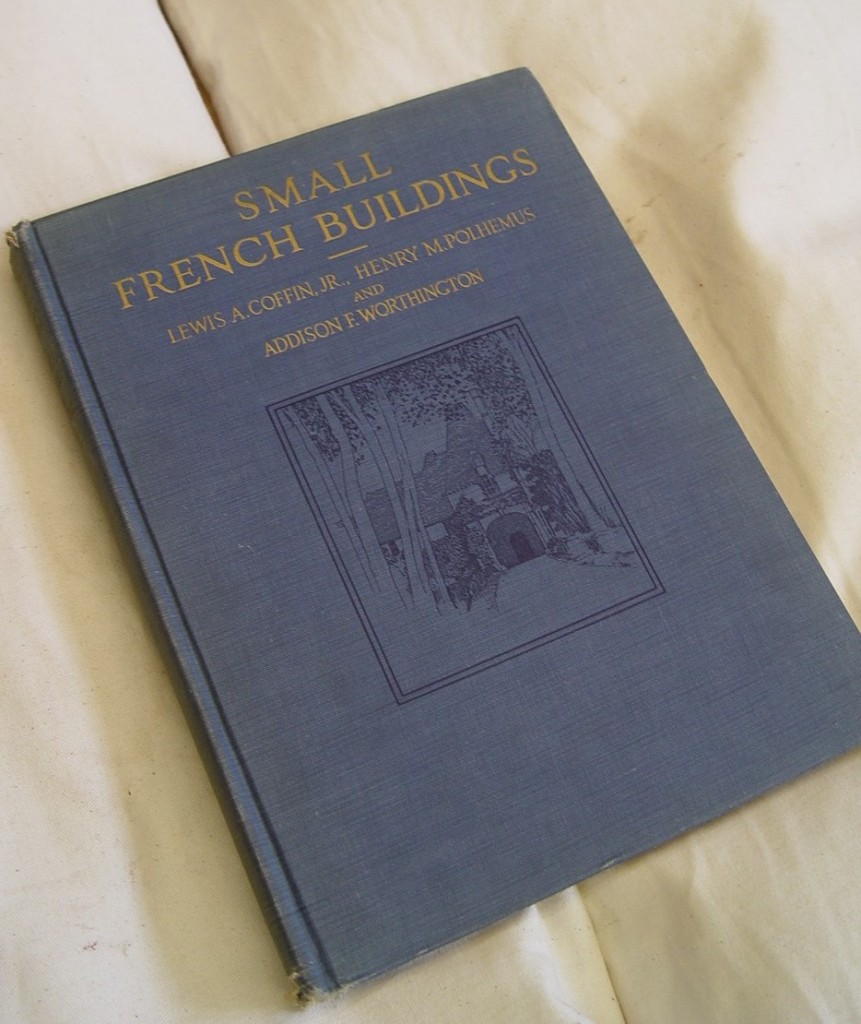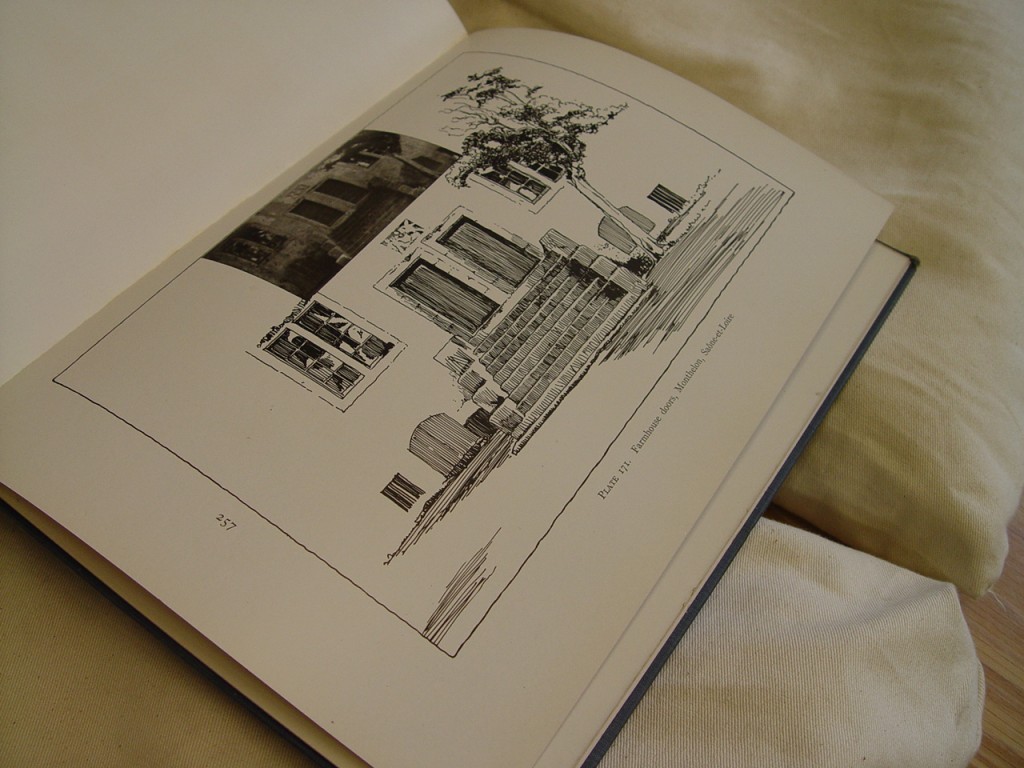Coffin, Jr., Lewis A., Henry M. Polhemus and Addison F. Worthington. Small French Buildings: The Architecture of Town and Country, Comprising Cottages, Farmhouses, Minor Chateaux or Manors with their Farm Groups, Small Town Dwellings, and a Few Churches. New York: C. Scribner, 1921.
Small French Buildings is an English-language celebration of the French vernacular in Normandy, Brittany, the Cote d’Or and Dordogne. The book divides its collection of 183 plates into four sections by building type: Cottages, Churches and Chapels, Town Houses, and small Châteaux, Manors and other farm buildings. While it is unclear why certain buildings are highlighted in this volume, the images included provide access (though somewhat distilled) to the architecture of the everyday–where people lived, worked, played and dreamed. Published in 1921, this idealized vernacular, however uncluttered by its society, is a unique document in an era when art and architectural historians were generally concerned with the canon.
Library of Congress call number: NA 1041 C6




Architects Lewis A Coffin and Henry M Polhemus, upon discharge from the military shortly after WWI, returned directly to Normandy where they served during the war because of their overwhelming love for the French architecture they’d discovered during deployment.
This trip was to document and cronicle a small sample of the vast selection of notable French architectural styles that ultimately served as a springboard for much of their celebrated work, and ultimately contribute to the French Revivalist era of architecture in America during the 1920s and 1930s.
The going was rough, as much of Normandy had suffered damage from the war and a great deal of the roads were destroyed making travel on bicycles the preferred, albeit awkward, method of travel for the partners.
We were delighted to learn more about these men and the journey that produced this invaluable contribution to the history of vernacular architecture. Thank you!